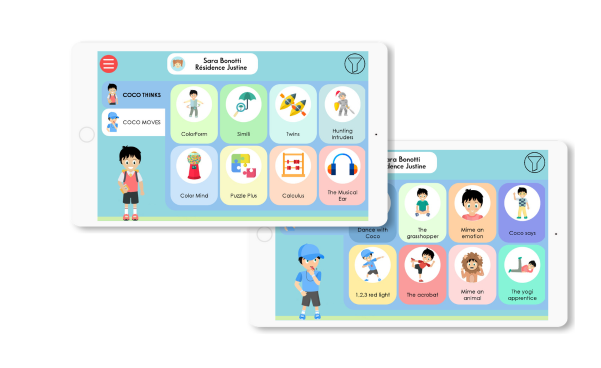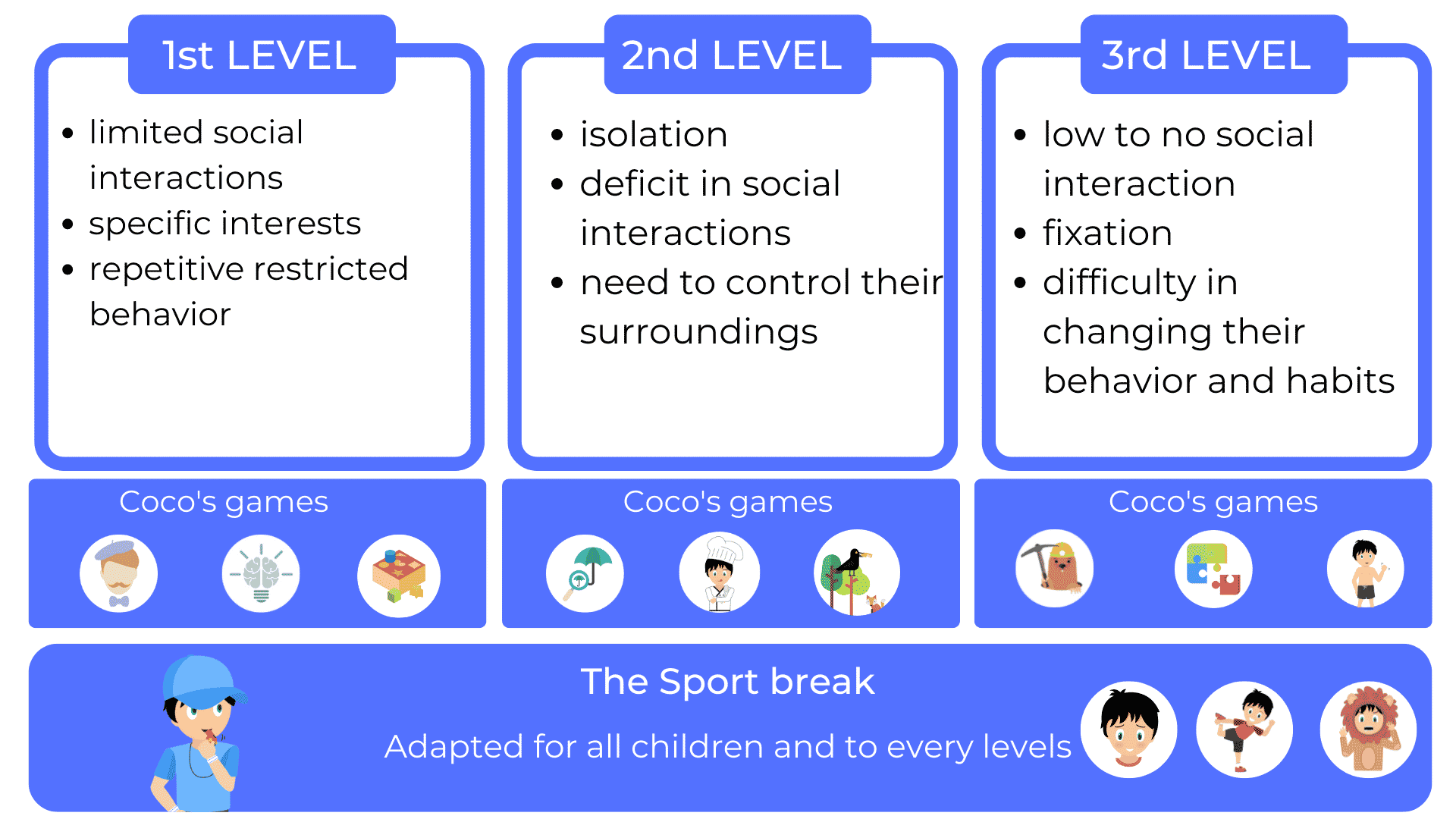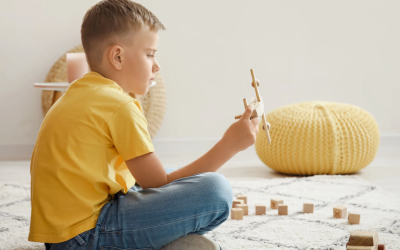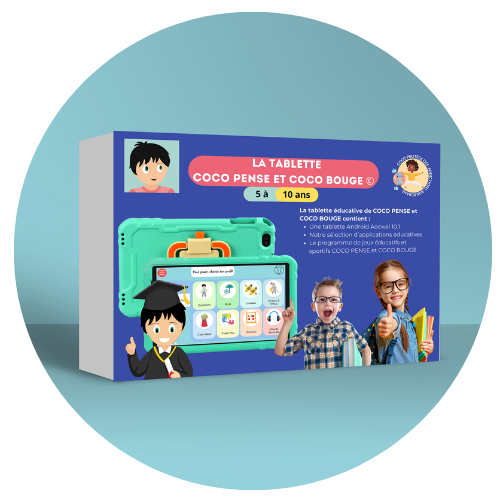Autism is a developmental disorder that affects communication, social interaction and behavior. People with autism can experience difficulties in many aspects of their daily lives, including sleep. Sleep disorders are common in children with autism, which can have a negative impact on their overall well-being. However, there are solutions to promote restful sleep in autistic children. In this article, we’ll explore the sleep disorders associated with autism and offer practical advice to help autistic children sleep better.
Sleep disorders in autistic children
Children with autism are more likely to have sleep problems than their neurotypical peers. These sleep disorders can manifest themselves in various forms, including :
- Insomnia: Insomnia is a common sleep issue among autistic children, characterized by difficulty falling asleep or staying asleep throughout the night. This struggle to initiate or maintain sleep can result in disrupted sleep patterns, leaving children feeling fatigued and irritable during the day. For instance, a child may experience prolonged periods of restlessness or frequent awakenings during the night, making it challenging for them to achieve restorative sleep.
2. Nightmares: Nightmares are another sleep-related challenge that some autistic children may encounter. These vivid and distressing dreams can disrupt sleep and contribute to nighttime disturbances. Nightmares may stem from various factors, including heightened anxiety, sensory sensitivities, or difficulties processing emotions, leading to unsettling dream experiences that awaken the child from sleep.
3. Sleep-disordered breathing, such as sleep apnea and other respiratory issues, can also impact sleep quality in autistic children: These breathing disorders may cause interruptions in breathing during sleep, leading to brief awakenings or periods of shallow breathing that disrupt the child’s sleep cycle. Consequently, the child may experience fragmented sleep and inadequate rest, contributing to daytime sleepiness and fatigue.
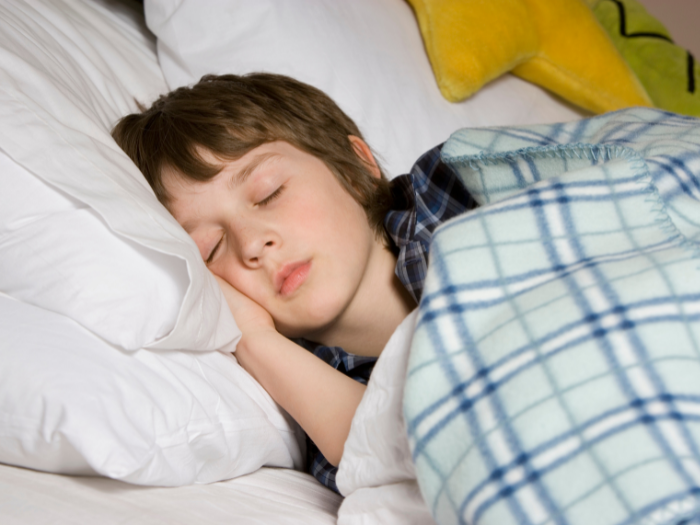
4. Circadian rhythm disorders: They are prevalent among children with autism, affecting their ability to regulate their internal biological clock. Children with circadian rhythm disorders may struggle to synchronize their sleep-wake cycles with the natural day-night cycle, resulting in irregular sleep patterns and difficulty maintaining a consistent sleep schedule. Factors such as sensory sensitivities, environmental stimuli, and changes in routine can further exacerbate circadian rhythm disturbances, making it challenging for children to establish healthy sleep habits.
Overall, addressing sleep issues in autistic children requires a comprehensive understanding of the underlying causes and tailored interventions to promote restorative sleep. By addressing factors such as insomnia, nightmares, sleep-disordered breathing, and circadian rhythm disorders, parents and caregivers can support their child’s sleep health and overall well-being. This may involve implementing bedtime routines, creating a conducive sleep environment, and seeking medical evaluation and treatment for underlying sleep disorders to ensure that autistic children receive the restorative sleep they need for optimal development and functioning.
Tips to promote restful sleep
There are several strategies and tips that can help autistic children sleep better. Here are a few recommendations to keep in mind:
1. Establish a regular sleep routine
Establishing a regular sleep routine is essential for supporting the well-being of autistic children, as it helps them prepare both mentally and physically for restorative sleep. Consistency is key when establishing bedtime and wake-up times, as it provides structure and predictability that can help regulate the child’s internal body clock. By adhering to a consistent sleep schedule, parents create a sense of routine and stability that signals to the child’s body when it’s time to wind down and prepare for sleep.
In addition to consistent bedtimes and wake-up times, it’s crucial to ensure that the sleep environment is conducive to relaxation. This includes creating a calm and soothing atmosphere in the bedroom, free from distractions or stimuli that may disrupt sleep. For example, parents can dim the lights, reduce noise levels, and remove electronic devices from the bedroom to minimize sensory input and promote relaxation.
Moreover, incorporating relaxing bedtime rituals into the sleep routine can further enhance the child’s ability to unwind and prepare for sleep. These rituals may include activities such as reading a bedtime story, listening to calming music, or engaging in gentle stretching exercises. By engaging in these calming activities consistently before bedtime, parents can help signal to the child’s body that it’s time to transition from wakefulness to sleep.
Furthermore, it’s essential to establish a consistent pre-bedtime routine that encourages relaxation and signals to the child that bedtime is approaching. This may involve activities such as taking a warm bath, practicing deep breathing exercises, or engaging in quiet play activities. By following the same sequence of calming activities each night, parents can help the child associate these routines with bedtime, making it easier for them to relax and fall asleep.
Overall, establishing a regular sleep routine that includes consistent bedtimes, a relaxing sleep environment, and calming bedtime rituals can greatly benefit autistic children by promoting better sleep quality and overall well-being. By prioritizing sleep hygiene and creating a structured sleep routine, parents can support their child’s sleep health and contribute to their overall development and functioning.
2. Create an environment conducive to sleep
Creating a conducive sleep environment is crucial for promoting restful sleep in autistic children. Ensure that your child’s bedroom is quiet, dark, and comfortable to minimize disturbances that could disrupt sleep. Utilize tools such as blackout curtains to block out external light, soft nightlights for gentle illumination, and comforting objects like stuffed animals to provide a sense of security and comfort. By optimizing the sleep environment in this manner, you can help your child relax and drift off to sleep more easily, contributing to better overall sleep quality and well-being.
3. Promote relaxation before bedtime
Establishing a calming pre-bedtime routine is essential for preparing autistic children for a restful night’s sleep. Engaging in a variety of relaxing activities before bedtime can help create a serene atmosphere conducive to winding down. Consider incorporating activities such as reading from a selection of quiet books, listening to soft and soothing music, or guiding your child through relaxation techniques like deep breathing exercises. By embracing these calming rituals as part of their nightly routine, parents can cultivate a peaceful environment that promotes relaxation and improves the quality of sleep for their autistic children.
4. Limit screen stimulation before bedtime
Exposure to blue light emitted by screens, including televisions, smartphones, and tablets, can significantly disrupt sleep patterns, particularly in children. It is highly advisable to restrict screen time before bedtime to mitigate these effects. Creating a screen-free routine in the hours leading up to sleep can effectively promote relaxation and prepare the brain for restorative sleep. Instead of screen-based activities, encourage calming activities such as reading a book, engaging in quiet play, or practicing relaxation techniques. By replacing screen time with these soothing activities, you can help your child unwind and transition smoothly into sleep mode. Additionally, consider implementing a consistent bedtime routine that signals to the brain that it’s time to wind down. This may include activities like dimming the lights, taking a warm bath, or listening to calming music. By prioritizing a screen-free bedtime routine, you can foster better sleep habits and support your child’s overall well-being.
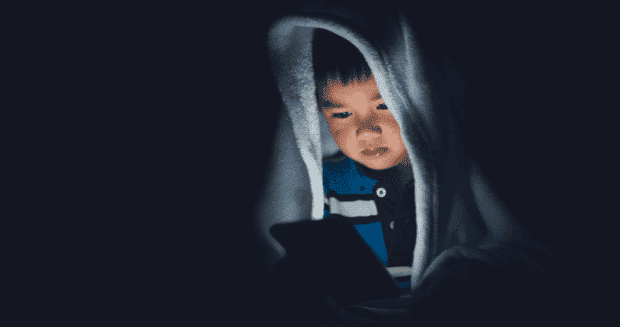
5. Promote regular physical activity
Encouraging regular physical activity can aid in regulating sleep for autistic children. Outdoor activities offer various benefits beyond merely burning energy. They provide multi sensory experiences that stimulate different senses and help children connect with nature, calming their nervous systems. Activities like running, jumping, or riding a bike not only provide exercise but also release pent-up energy, promoting deeper sleep. Outdoor play also exposes children to natural light, regulating their internal clock and promoting healthy sleep-wake cycles. Additionally, outdoor activities offer social interaction and sensory exploration opportunities, enhancing overall development. Scheduling regular outdoor play sessions throughout the day can integrate physical activity into their routine, improving sleep patterns and overall well-being.
6. Consider medical interventions
In some cases, medical interventions may be necessary to treat sleep disorders in autistic children. Consult a healthcare professional specializing in autism to discuss the options available, such as behavioral therapy or medication.
Sleep disorders are common in autistic children, but there are solutions to promote restful sleep. By establishing a regular sleep routine, creating a sleep-friendly environment, encouraging relaxation before bedtime, limiting screen stimulation, promoting regular physical activity and considering medical interventions if necessary, parents can help their autistic children enjoy better quality sleep. It’s important to consult a healthcare professional specializing in autism for personalized advice tailored to each child.
COCO THINKS and COCO MOVES, educational and sports games
Today, COCO is an application used by autistic children either at home or with a healthcare professional, who may be a speech therapist, occupational therapist, psychologist or psychomotor therapist. All professionals wishing to subscribe to Coco can benefit from a web-based performance tracking platform. It is therefore possible to see the evolution and improvement of people with autism, and thus personalize their care.
Coco goes everywhere with you, because the application doesn’t need Wi-Fi to work, only for updates.
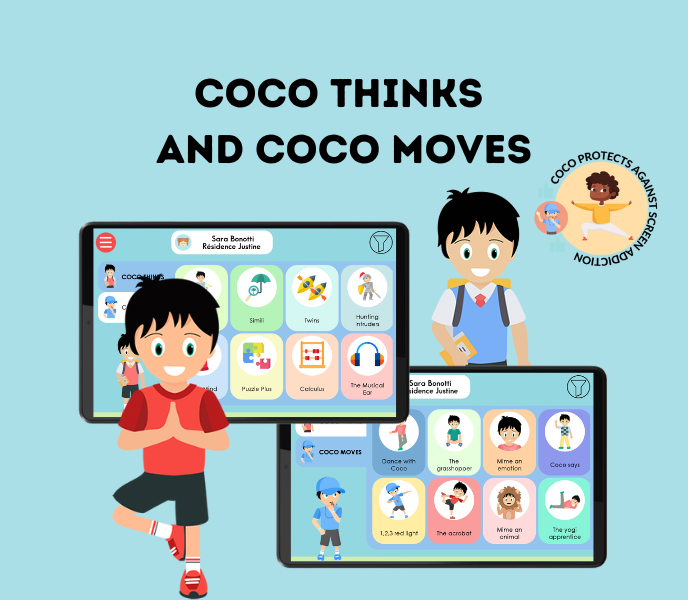
SPORTS BREAKS BENEFIT AUTISTIC CHILDREN
In COCO THINKS and COCO MOVES, you’ll also find physical activities. Every 15 minutes of screen time, the application stops and offers children physical games.
This sports break has many advantages for children, especially those with autism.
Screen use is very useful and loved by children, but prolonged use can become negative. With Coco, children can take a dynamic break, learning to let go of the tablet and engage in physical activity while having fun at the same time.
All our physical activities are designed with children in mind. With balance and dance games, children learn to know their bodies and adapt to their environment. For children with autism, this can be very useful for augmenting known motor patterns and for gaining a better sense of self (especially when there is hypo or hypersensitivity).
In Coco, there’s also the “mime an emotion” game, where the child has to reproduce the emotion shown on screen by Coco. Children can first learn to name emotions, to recognize them in themselves and then in others. What’s more, there’s an audio description in the game that explains the emotion and what you feel in your body.
In our educational application COCO, you can also learn to recognize your emotions with the game “Mime emotions”, in the COCO MOVES section. By clicking on the question mark, you will be able to learn the different emotions in order to better recognize them.
This game to mime emotions is also accessible as a break, every 15 minutes of screen. Every 15 minutes, children are asked to choose a physical activity for an active break. And you can also mime the emotions at that time!
In our educational application COCO, you can also learn to recognize your emotions with the game “Mime emotions”, in the COCO MOVES section. By clicking on the question mark, you will be able to learn the different emotions in order to better recognize them.
This game to mime emotions is also accessible as a break, every 15 minutes of screen. Every 15 minutes, children are asked to choose a physical activity for an active break. And you can also mime the emotions at that time!
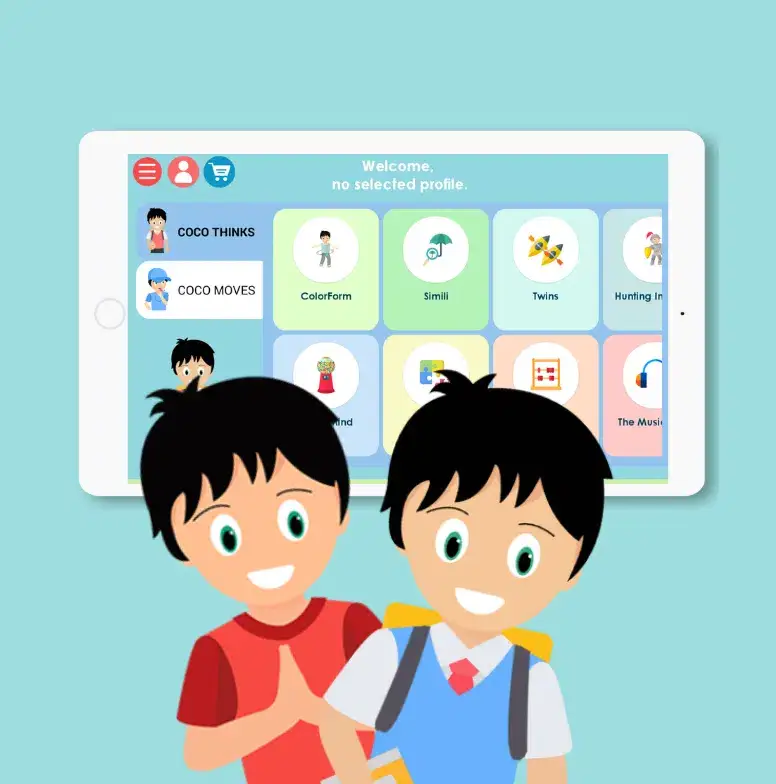
Other articles that might interest you:
Using Technology to Enhance Communication in Autism Speech Therapy
Autism Spectrum Disorder (ASD) presents unique challenges in communication, making speech therapy an essential...
Effective Autism Behavior Therapy: Improving Outcomes
Autism is a complex neurodevelopmental disorder that affects individuals in various ways. It is characterized by...
Autism Therapy at Home: Effective Strategies
Autism Spectrum Disorder (ASD) is a neurodevelopmental disorder that affects individuals in various ways. It is...


